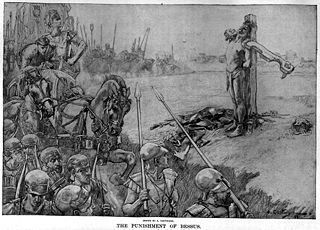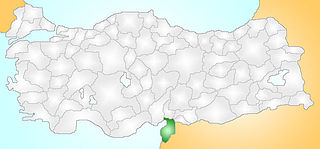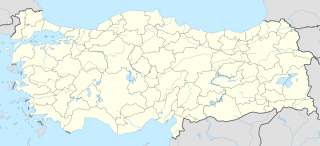Battle of Issus may refer to:
- Battle of Issus (or 'The Battle at Issus') (333 BC), a battle in which Alexander the Great of Macedonia defeated Darius III of Persia.
- Battle of Issus (194), the third major battle fought between Roman Emperor Septimius Severus and his rival Pescennius Niger.
- Battle of Issus (622) (or 'Third Battle of Issus'), a name sometimes used in older sources for an alleged battle between Eastern Roman Emperor Heraclius and the Sassanid Empire at Issus during the emperor's 622 campaign. Modern scholarly sources place it in Cappadocia instead.

The Battle of Issus occurred in southern Anatolia, on November 5, 333 BC between the Hellenic League led by Alexander the Great and the Achaemenid Empire, led by Darius III, in the second great battle of Alexander's conquest of Asia. The invading Macedonian troops defeated Persia. After the Hellenic League soundly defeated the Persian satraps of Asia Minor at the Battle of the Granicus, Darius took personal command of his army. He gathered reinforcements and led his men in a surprise march behind the Hellenic advance to cut their line of supply. This forced Alexander to countermarch, setting the stage for the battle near the mouth of the Pinarus River and the town of Issus.
The Battle of Issus was the third major battle in AD 194 between the forces of Emperor Septimius Severus and his rival, Pescennius Niger, part of the Year of the Five Emperors.
The first of these battles is the subject of two notable artworks, and in the context of art it is usually referred to as the Battle of Alexander at Issus or simply the Battle of Alexander.
- The Alexander Mosaic of Pompeii depicts a battle between Alexander and Darius. It is commonly believed to be the battle of Issus rather than the Battle of Gaugamela, another in which Darius was Alexander's adversary.
- The Battle of Alexander at Issus (1528–9) by Albrecht Altdorfer.

The Alexander Mosaic, dating from circa 100 BC, is a Roman floor mosaic originally from the House of the Faun in Pompeii, that is allegedly an imitation of Apelles' painting. It depicts a battle between the armies of Alexander the Great and Darius III of Persia and measures 2.72 by 5.13 metres. The original is preserved in the Naples National Archaeological Museum. The mosaic is believed to be a copy of an early 3rd-century BC Hellenistic painting.

The Battle of Gaugamela, also called the Battle of Arbela, was the decisive battle of Alexander the Great's invasion of the Persian Achaemenid Empire. In 331 BC Alexander's army of the Hellenic League met the Persian army of Darius III near Gaugamela, close to the modern city of Dohuk in Iraqi Kurdistan. Though heavily outnumbered, Alexander emerged victorious due to his army's superior tactics and his deft employment of light infantry. It was a decisive victory for the Hellenic League and led to the fall of the Achaemenid Empire.

The Battle of Alexander at Issus is a 1529 oil painting by the German artist Albrecht Altdorfer, a pioneer of landscape art and a founding member of the Danube school. It portrays the 333 BC Battle of Issus, in which Alexander the Great secured a decisive victory over Darius III of Persia and gained crucial leverage in his campaign against the Persian Empire. The painting is widely regarded as Altdorfer's masterpiece, and is one of the most famous examples of the type of Renaissance landscape painting known as the world landscape, which here reaches an unprecedented grandeur.
| This disambiguation page lists articles associated with the title Battle of Issus. If an internal link led you here, you may wish to change the link to point directly to the intended article. |






